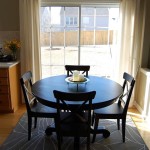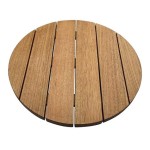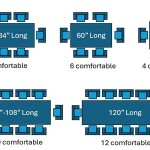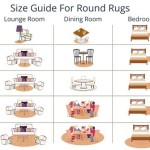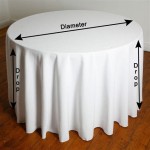The Purpose of Table Napkins: More Than Just Wiping Your Mouth
Table napkins, seemingly simple squares of cloth or paper, are a ubiquitous presence in dining settings ranging from casual family meals to the most formal of banquets. While their primary function is often perceived as a tool for maintaining cleanliness, the purpose of a table napkin extends far beyond wiping one's mouth. Understanding the multifaceted role of these small but essential items can enhance dining etiquette and appreciation for the subtle nuances of a well-set table.
Historically, the concept of table napkins evolved from rudimentary hand cloths used in ancient times. In civilizations where communal eating was prevalent, shared cloths or even sleeves served as the primary means of cleaning hands and faces. As dining practices became more refined, individual hand cloths were introduced, eventually transforming into the table napkins recognized today. The materials used also evolved, progressing from coarse linens to finer fabrics and, more recently, disposable paper options.
The modern table napkin serves various purposes, acting as both a practical tool for hygiene and a subtle element of visual and social grace. It contributes to the overall dining experience by upholding standards of cleanliness, protecting clothing, signaling dining intentions, and adding to the aesthetic appeal of the table setting.
Hygiene and Cleanliness
The most obvious and fundamental purpose of a table napkin is to maintain hygiene during a meal. It provides a readily available means to clean the mouth and fingers from food particles, sauces, and other remnants that inevitably accumulate while eating. Using the napkin effectively prevents these residues from transferring onto clothing, utensils, or other surfaces, contributing to a more sanitary and pleasant dining experience for everyone at the table.
When used correctly, the napkin should be dabbed gently on the mouth instead of being rubbed vigorously. This prevents irritation and avoids spreading food particles. For finger foods or situations where hands become soiled, the napkin can be used to wipe the fingers discreetly. The goal is to maintain a clean presentation and avoid drawing unnecessary attention to the act of cleaning.
Beyond immediate cleaning, the napkin can also be used to address minor spills or accidents. A small spill of water or sauce can be quickly absorbed with the napkin, preventing it from spreading and causing further mess. In such cases, it's important to act promptly and discreetly, minimizing disruption to the meal and the conversation.
Furthermore, the use of a table napkin demonstrates consideration for others at the table. By actively managing one's own cleanliness, an individual contributes to a shared environment of hygiene and respect. This seemingly small gesture reflects a commitment to social etiquette and a heightened awareness of the impact of one's actions on others.
Protecting Clothing and Preventing Stains
Beyond personal hygiene, table napkins play a crucial role in protecting clothing from potential stains and spills. Accidents happen, and a well-placed napkin can act as a barrier between food and garments, preventing lasting damage and potential embarrassment.
The practice of placing the napkin in the lap serves two primary purposes: it provides a convenient surface for wiping the mouth and fingers, and it creates a protective shield for the clothing below. This is particularly important when consuming foods that are prone to dripping or splattering, such as sauces, soups, or beverages.
In formal settings, and upon being seated, the diner should unfold the napkin completely or partially, depending on its size, and place it on their lap. Smaller napkins, typically used in less formal settings, can be unfolded completely. Larger napkins, often found in more upscale restaurants, may be folded in half before being placed on the lap. The key is to ensure adequate coverage of the lap area, providing sufficient protection against spills.
For children or those prone to accidents, tucking the napkin into the collar or waistband can provide an extra layer of protection. While this practice is generally discouraged for adults in formal settings, it can be a practical solution for minimizing the risk of stains, especially when dealing with messy foods or unsteady hands. The priority is to balance the need for protection with the desire to maintain a sense of decorum.
The material of the napkin also contributes to its effectiveness as a protective barrier. Cloth napkins, particularly those made of thicker fabrics, tend to be more absorbent and resistant to stains than paper napkins. However, even a simple paper napkin can provide a degree of protection, especially if used promptly to blot up spills before they have a chance to soak into clothing.
Signaling Intentions and Etiquette
Beyond their practical functions, table napkins also serve as subtle signals of dining intentions and adherence to proper etiquette. The way a napkin is used and positioned throughout the meal communicates important information to the host and waitstaff, contributing to a smoother and more respectful dining experience.
Upon being seated, the act of placing the napkin in one's lap signals readiness to begin the meal. This gesture indicates that the diner is prepared to participate in the dining experience and acknowledges the formality of the occasion, if applicable. It also subtly communicates respect for the host and the effort that has been put into preparing the meal.
During the meal, proper napkin etiquette dictates that the napkin should be used discreetly and sparingly. Excessive wiping or fidgeting with the napkin can be distracting and may be perceived as impolite. The focus should remain on enjoying the meal and engaging in conversation, with the napkin serving as a subtle aid to maintaining cleanliness and composure.
When temporarily leaving the table, such as to use the restroom, the napkin should be placed on the chair to indicate that the diner intends to return. This signal prevents the waitstaff from prematurely clearing the place setting and informs other diners that the individual is not yet finished with their meal. The napkin should be loosely crumpled and placed on the seat of the chair, rather than folded neatly or placed on the table.
At the conclusion of the meal, the napkin should be placed loosely on the table to the left of the plate. This signals to the waitstaff that the diner has finished eating and that the table can be cleared. The napkin should not be refolded or crumpled into a tight ball, as this can be interpreted as a sign of dissatisfaction or disrespect. A simple and unassuming placement of the napkin indicates that the meal has been completed and that the diner is ready to depart.
In addition to these general guidelines, there are also certain customs associated with napkin usage in specific cultural contexts. For example, in some cultures, it is considered impolite to use a napkin to wipe one's face excessively, while in others, it is perfectly acceptable. Understanding these cultural nuances can help to avoid unintentional faux pas and demonstrate respect for local customs.
The table napkin is more than just a piece of cloth or paper; it is a tool that contributes to the overall dining experience. From its primary function of maintaining hygiene to its role in signaling dining intentions and adhering to etiquette, the napkin provides a subtle yet important element of refinement and respect.

Napkin Etiquette Table Manners

Five Uses Of Dinner Napkins

Five Uses Of Dinner Napkins

Five Uses Of Dinner Napkins

8 Ways To Use A Napkin With Proper Table Etiquette Wikihow

Fine Dining Etiquette What Is The Proper Way To Use A Table Napkin

Benefits Of Using Table Napkins Efavormart Com

Table Manners The Napkin Rooted In Foods

Napkin Etiquette

Benefits Of Using Table Napkins Efavormart Com
Related Posts


